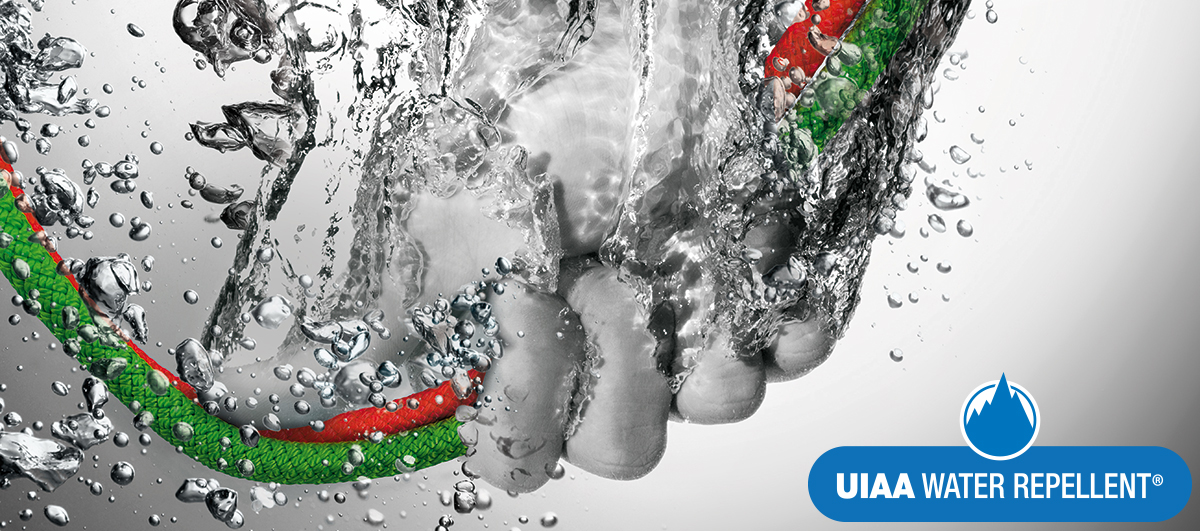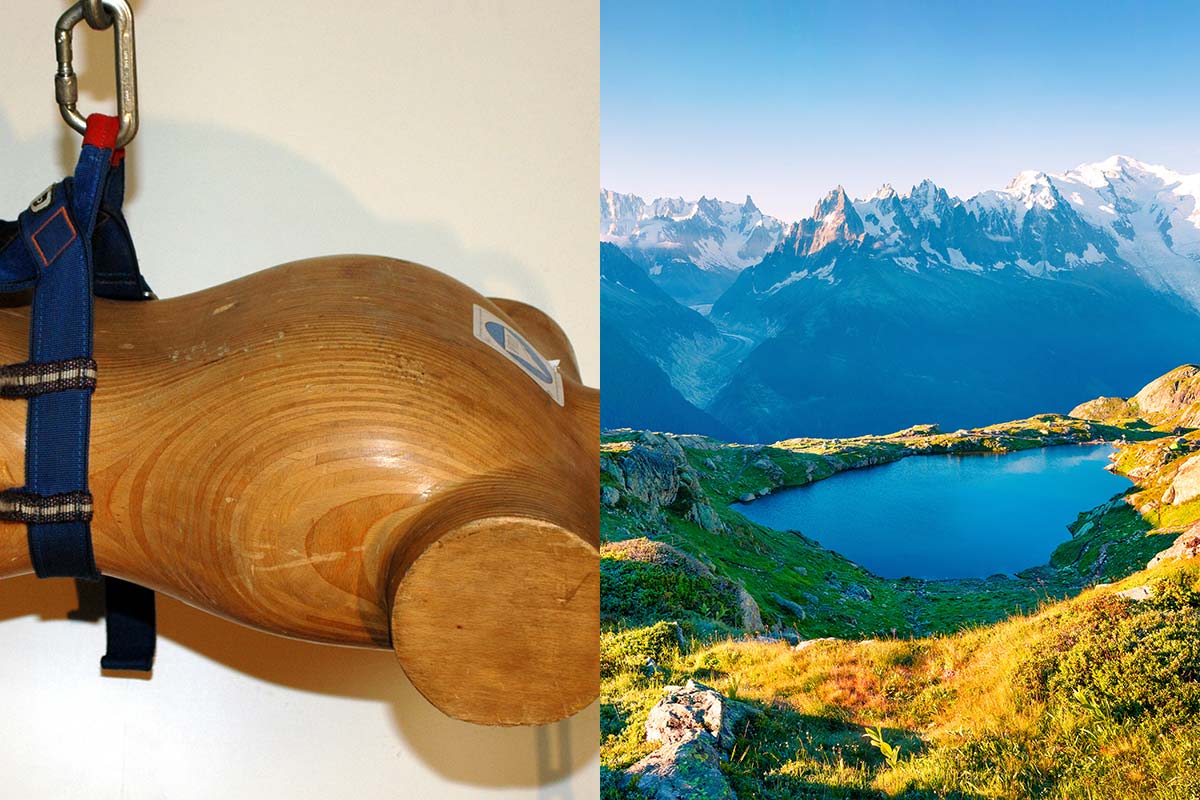It took ten years of research and testing to develop a new water repellency standard for ropes (Photo: UIAA)
A new standard for water repellent ropes has been approved by the UIAA Safety Commission after almost 10 years of research and testing.
“When a rope is full of water, it becomes heavy, difficult to use in belay devices and descenders,” said Michael Beal of Beal, a European rope manufacturer which worked with the UIAA to develop the standard. “It may also freeze and become impossible to use.”
Beal said the new standard, which is a great opportunity to provide good information to users, was developed to ensure that water absorption in ropes did not lead to safety issues.
To qualify for the new standard, a rope sample is subjected to subject to light abrasion over its entire surface, equivalent to a few days’ use. The rope is then soaked for 15 minutes following a precise procedure.
Ropes with a surface treatment only, can’t succeed in the test and, thus, can’t be qualified as “UIAA Water Repellent,” said Beal.
To pass the test at a certified laboratory, the amount of absorbed water must not be greater than 5% of the rope’s weight. For comparison, a non-treated rope absorbs around 50% of water in this test, and ropes labelled as “dry” but lacking adequate treatments can absorb between 20% and 40% of water.
UIAA equipment standards are the only global standards for climbing equipment that are developed by climbers for the climbing community. Purchase of climbing equipment that bears the UIAA Safety Label supports the UIAA in its mission to promote and sustain mountaineering and climbing.


